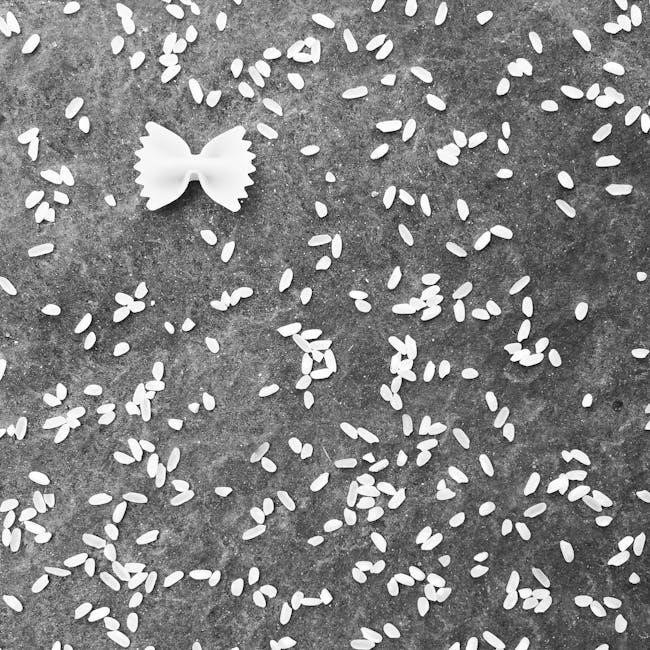Discover the convenience of free PDF bow tie patterns, offering various styles like butterfly and skinny designs. Perfect for crafting unique accessories with customizable fabric choices.
What is a Bow Tie Pattern?
A bow tie pattern is a downloadable template designed to guide the creation of bow ties. Available as free PDF files, these patterns provide precise measurements and shapes for various bow tie styles, such as butterfly, skinny, or adjustable designs. They often include multiple sizes to accommodate different neck measurements and preferences. The patterns are typically printable and reusable, making them ideal for DIY projects. Many patterns are customizable, allowing users to choose fabrics, colors, and additional details. Perfect for sewing enthusiasts, these templates simplify the process of crafting unique and stylish bow ties for formal or casual occasions.
Why Use a Free PDF Pattern?
Using a free PDF bow tie pattern offers convenience, affordability, and versatility. These patterns are readily available for download, providing instant access to various designs, from classic butterfly to modern skinny styles; They cater to different skill levels, making them ideal for both beginners and experienced crafters. Free PDF patterns often include multiple sizes, ensuring a perfect fit for any wearer. Additionally, they allow for customization, enabling users to experiment with fabrics, colors, and embellishments. This cost-effective option eliminates the need for expensive templates, making it easier to create unique, personalized bow ties for special occasions or everyday wear.
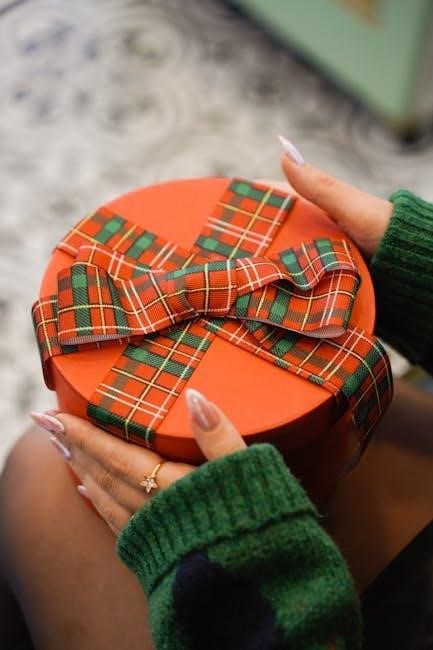
Popular Styles of Bow Ties
Bow ties come in various styles to suit different preferences and occasions. The classic butterfly bow tie is a timeless favorite, known for its wide, rounded ends. The wide bow tie offers a bold, statement-making look, while the skinny bow tie provides a sleek, modern alternative. Adjustable bow ties are also popular, offering versatility in sizing. These styles are widely available in free PDF patterns, allowing crafters to create custom bow ties that match their unique tastes. Whether for formal events or casual wear, these styles ensure a polished and personalized accessory that elevates any outfit with elegance and charm.

Types of Bow Tie Patterns
Bow tie patterns include classic butterfly, wide, skinny, and adjustable designs, catering to various preferences and skill levels. These patterns are easily accessible as free PDF downloads.
Classic Butterfly Bow Tie
The classic butterfly bow tie is a timeless choice, known for its wide, rounded shape and balanced proportions. It is versatile and suits formal occasions, making it a popular option for black-tie events or weddings. The butterfly style is characterized by its symmetrical design, creating a polished look. When using a free PDF pattern, the butterfly bow tie is often a great starting point for beginners, as its straightforward design minimizes complexity. The pattern typically includes templates for both the bow and neck strap, ensuring a professional finish. Its adjustable nature allows for a customizable fit, enhancing comfort and style.
Wide Bow Tie Pattern
The wide bow tie pattern is a bold and stylish option, ideal for those who want to make a statement. Its broader design makes it more visible, adding a touch of sophistication to formal outfits. This pattern is particularly suited for individuals with a larger frame or those who prefer a more dramatic look. The wide bow tie is often paired with spread-collar shirts for a balanced appearance. Free PDF patterns for wide bow ties are readily available, offering precise measurements and step-by-step guides. This style is perfect for special occasions, such as weddings or galas, and can easily be customized to match your wardrobe.
Skinny Bow Tie Pattern
The skinny bow tie pattern offers a sleek, modern alternative to traditional styles, perfect for those who prefer a narrower, more streamlined look. This design is ideal for slim-fit shirts and contemporary outfits, adding a touch of sophistication to formal or semi-formal attire. Skinny bow ties are versatile, suitable for weddings, black-tie events, or even casual gatherings. Free PDF patterns for skinny bow ties are widely available, providing precise measurements and instructions for a professional finish. They are an excellent choice for fashion-forward individuals who want to stand out while maintaining elegance. The skinny bow tie is a timeless option for those who appreciate minimalist design.
Modern Adjustable Bow Tie
The modern adjustable bow tie combines sleek design with practicality, offering a one-size-fits-most solution. This style features an adjustable strap or slider, allowing for precise neck size customization. Perfect for contemporary events, it pairs well with suits, blazers, or even casual attire. Free PDF patterns for adjustable bow ties are popular among DIY enthusiasts, providing clear instructions for creating a polished finish. The adjustable feature ensures versatility, making it suitable for individuals with varying neck sizes. This modern take on the classic bow tie is ideal for those seeking comfort and a fashionable appearance. Its adaptability and style make it a favorite for many.
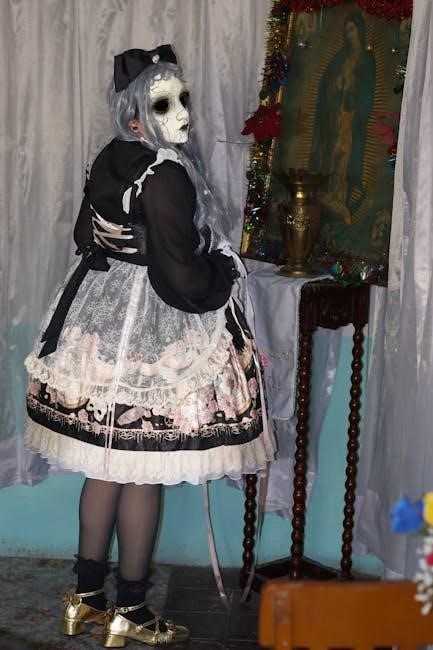
How to Choose the Right Fabric
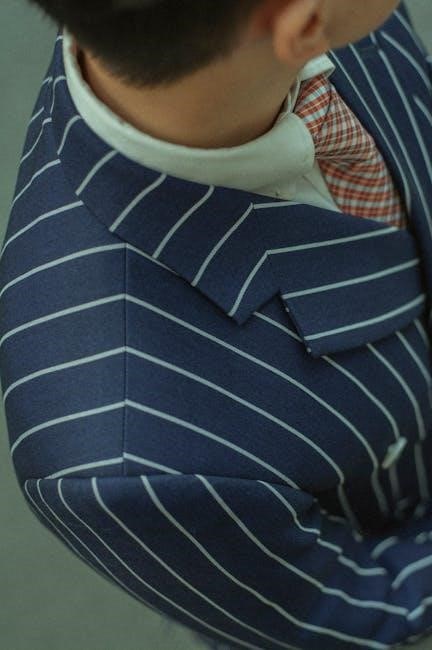
Selecting fabric for bow ties involves considering texture, weight, and pattern. Lightweight materials like silk or cotton are ideal for a smooth, elegant finish. Ensure the fabric complements the outfit while maintaining durability and style.

Recommended Fabrics for Bow Ties
Silk, satin, and high-quality cotton are excellent choices for bow ties due to their smooth textures and elegant appearances. Silk offers a luxurious sheen, while satin provides a similar smoothness at a potentially lower cost. Cotton, especially in dressy patterns, can also work well for a more casual yet stylish look. Wool and velvet, though luxurious, may be too thick, and polyester, while durable, might lack the desired elegance. Linen, while lightweight, can wrinkle easily, making it less ideal. Ultimately, silk, satin, and cotton are recommended for their balance of formality, comfort, and ease of use.

How Much Fabric Do You Need?
When creating a bow tie using a free PDF pattern, the amount of fabric required depends on the bow tie’s style and size. For a standard adult bow tie, you’ll typically need about 1/4 to 1/2 yard of fabric; This accounts for the bow tie’s main pieces and any necessary interfacing. Larger or wider bow ties may require up to 3/4 yard, while smaller or skinny styles could use slightly less. Always consider fabric waste and add a little extra to ensure you have enough for accurate cuts. Refer to your specific PDF pattern for precise measurements to avoid shortages.
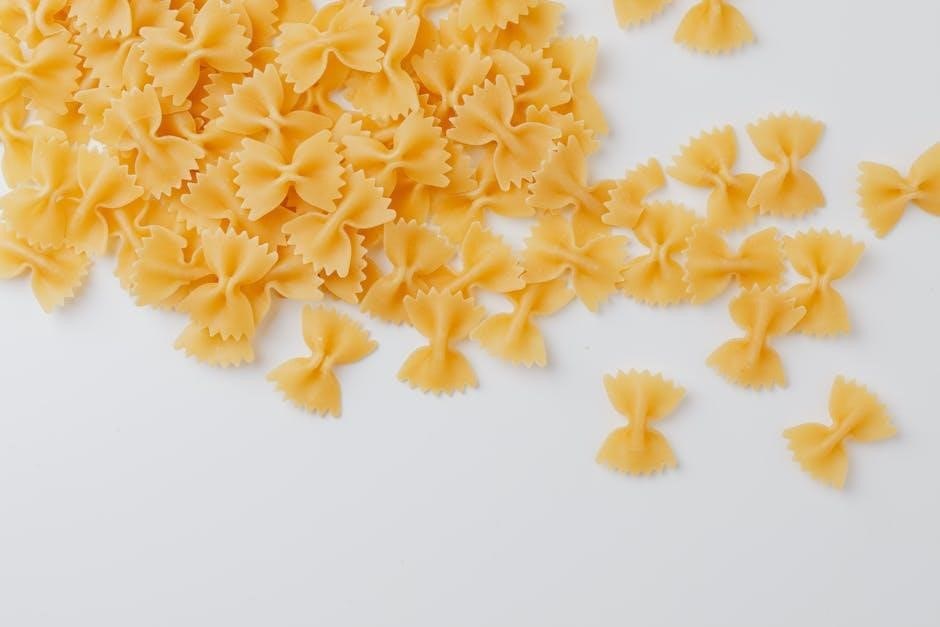
Matching Patterns and Colors
Matching patterns and colors for your bow tie is essential to achieve a polished look. Start by selecting a fabric that complements your outfit, ensuring the colors don’t clash. For a classic look, opt for subtle patterns like stripes or dots in neutral tones. Bold patterns, such as geometric designs, work well for statement pieces. Consider the occasion—bright colors are ideal for formal events, while muted tones suit casual gatherings. Always balance patterns with solid colors to avoid overwhelming the design. Personal style plays a key role, so experiment with combinations to find what suits you best. Coordination is key for a refined finish.
Step-by-Step Guide to Making a Bow Tie
Download and print the free PDF pattern, ensuring correct printer settings for accurate sizing. Cut fabric pieces precisely using scissors or a rotary cutter. Sew pieces together, leaving a small seam allowance, and turn right side out. Add interfacing for stability before sewing. Finish edges with zigzag stitching to prevent fraying. Shape the bow tie carefully, following instructions for forming the perfect bow. Ensure all materials like fabric, thread, and scissors are ready. Pay attention to each step for a polished result.
Downloading and Printing the Pattern
Visit a trusted website offering free bow tie PDF patterns. Download the file and ensure your printer is set to “Actual Size” or “100%” scaling. Print on standard A4 or letter-sized paper, checking orientation settings. Verify the pattern includes a test square to confirm accuracy. Use high-quality paper for clarity. Once printed, review the pattern pieces and instructions carefully. Ensure all pages are printed and aligned correctly if the pattern spans multiple sheets. Gather fabric, scissors, and sewing tools before proceeding. Double-check printer settings to avoid scaling issues, as this affects the bow tie’s fit and appearance.
Cutting Out the Fabric Pieces
Lay your fabric flat on a sturdy surface, ensuring it’s smooth and wrinkle-free. Place the printed bow tie pattern on top, aligning it with the fabric grain. Pin the pattern securely to prevent shifting. Use sharp scissors or a rotary cutter for precise cuts. Carefully trace the pattern’s edges, maintaining accuracy for a professional finish. Cut slowly, especially around curves, to avoid mistakes. If using interfacing, cut it simultaneously with the fabric for stability. Double-check each piece’s shape and size against the pattern before proceeding. Accuracy in cutting ensures a well-fitted bow tie, so take your time and work patiently.
Sewing the Bow Tie Together
Place the fabric pieces right sides together, ensuring edges align perfectly. Sew along the curved edges using a 1/4-inch seam allowance. Leave a small opening to turn the bow tie right side out. Carefully trim excess fabric near seams to prevent bulk. Turn the bow tie inside out through the opening, using a blunt tool to push out corners. Press the seams flat with an iron for a crisp finish. Fold the raw edges of the opening under and hand-stitch to secure. Your bow tie is now ready for shaping and styling. Ensure all stitching is tight and even for a professional look.
Adding Interfacing for Stability
Interfacing adds structure and stability to your bow tie, preventing it from stretching or losing shape. Cut a piece of interfacing to match the bow tie pattern pieces. Place the interfacing between the fabric layers before sewing to ensure it is securely attached. For fusible interfacing, follow the manufacturer’s instructions to iron it onto the fabric. Sew-in interfacing should be pinned in place and sewn along with the fabric. This step ensures the bow tie holds its shape and maintains a crisp, professional appearance. Properly applied interfacing is essential for a polished and durable bow tie that ties neatly every time.
Finishing the Edges and Seams
Finishing the edges and seams of your bow tie ensures a professional and long-lasting result. Use a zigzag stitch or a serger to prevent fraying on the raw edges of the fabric. For a cleaner look, fold the seams inward and press them firmly. Topstitching along the edges can add a decorative touch while reinforcing the seams. If desired, apply bias tape to the edges for an extra polished finish. Properly finishing the seams not only enhances the bow tie’s durability but also gives it a crisp, tailored appearance. This step is essential for achieving a high-quality, store-bought look at home.
Styling Your Bow Tie
A well-styled bow tie adds elegance and personality to any outfit. Pair it with suits, blazers, or even casual attire for a refined look. Experiment with different knots, colors, and patterns to match your style. A perfectly tied bow tie can elevate your appearance for formal events, weddings, or business meetings. Don’t forget to add a personal touch, like a dimple or a subtle angle, to make your bow tie truly stand out and reflect your unique taste.
How to Tie a Bow Tie
Tying a bow tie involves creating two identical loops and securing them in the center. Start by facing a mirror and placing the bow tie around your neck with one end hanging about 1 inch lower than the other. Cross the longer end over the shorter one, forming an “X” shape. Take the longer end and pass it behind the shorter end, then bring it up and through the loop you’ve just created. You should now have a basic knot. To form the bow, fold the shorter end in half and tuck it behind the knot, then pass it through the loop again. Adjust both loops to ensure they are even and tighten the bow tie by pulling gently on both ends. For a polished look, ensure the bow tie is centered and the loops are balanced. Practice makes perfect!
Pairing with Different Outfits
A bow tie can elevate various outfits, making it a versatile accessory for both formal and semi-formal events. For black-tie events or weddings, pair a classic silk bow tie with a tuxedo for timeless elegance. In semi-formal settings, such as dinner dates or business events, opt for a patterned or textured bow tie to add personality to a suit and tie combination. Bow ties also work well with blazers and jeans for a stylish, modern look. When choosing a bow tie, consider the colors and patterns of your shirt and suit to ensure a cohesive look. Experiment with different styles to match your occasion and personal flair.
Caring for Your Bow Tie
Proper care ensures your bow tie remains in pristine condition. For silk ties, hand wash with mild soap and cold water; avoid machine washing. Spot clean stains gently with a damp cloth. For cotton or wool ties, machine washing on a delicate cycle is acceptable, but air drying is best. Store your bow tie flat or hung to maintain its shape. Avoid direct sunlight to prevent fading. Use a fabric protector to repel stains. For wrinkles, steam lightly or iron on a low setting. Regular care extends the life of your bow tie, keeping it stylish and well-maintained for years.
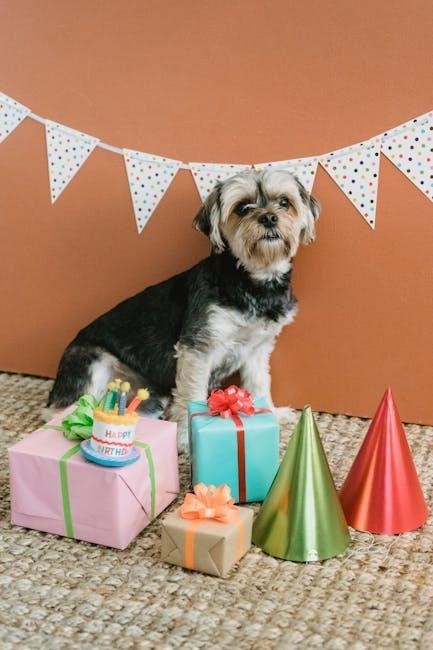
Free Resources for Bow Tie Patterns
Explore websites like Craftsy and Pinterest for free bow tie PDF patterns, perfect for DIY enthusiasts. These platforms offer a variety of designs and sizes to suit your needs.
Best Websites for Free PDF Patterns
Discover top websites offering free bow tie PDF patterns. Craftsy provides an extensive library of sewing patterns, including bow ties, with detailed instructions. Pinterest is a treasure trove of free templates, perfect for DIY enthusiasts. Etsy also features a variety of free and paid patterns, with many sellers offering freebies. These platforms cater to all skill levels, ensuring you find the perfect design to match your style. Explore these sites to download high-quality patterns and start crafting your unique bow ties effortlessly.
YouTube Tutorials for Beginners
YouTube offers a wealth of tutorials tailored for beginners to create bow ties using free PDF patterns. Channels like Sew Over It and Professor Pincushion provide step-by-step guides, from printing patterns to sewing. DIY Danielle also shares detailed videos on cutting fabric and assembling the bow tie. These tutorials are ideal for those new to sewing, offering clear instructions and tips for a smooth process. They often include styling advice and solutions for common mistakes, ensuring you can confidently create and wear your homemade bow tie.
Printable Templates for Different Sizes
Printable templates for bow ties are available in various sizes to suit different preferences and collar sizes. These templates are often included in free PDF patterns, offering options for classic, wide, or skinny bow ties. Many patterns cater to both adults and children, ensuring a customizable fit. Some templates also include adjustable straps, allowing the bow tie to accommodate varying neck sizes. By choosing the right template, you can create a bow tie that perfectly complements your outfit and personal style. Always ensure to print the template at the correct scale for accurate results.
Advanced Tips and Customization
Explore advanced techniques like personalized embroidery, unique fabric blends, or custom shapes to elevate your bow tie. Experiment with contrasting stitching or textured materials for a distinctive look.
Adding Personalized Details
Personalize your bow tie with custom embroidery, appliques, or monograms to create a unique accessory. Add a name, initials, or a special message for a thoughtful touch. Use contrasting thread or fabric patches to make the details stand out. Consider adding a custom label or charm for a bespoke feel. These personal touches can reflect your personality or match a specific outfit. Experiment with placement, such as at the center, edges, or along the bow tie’s length. Ensure the details are balanced and don’t overwhelm the design. Personalized elements can make your bow tie truly one-of-a-kind and add sentimental value.
Using Alternative Materials
Explore unconventional materials to create unique bow ties, such as velvet, satin, or even leather for an edgy look. Cotton and wool blends offer durability, while silk provides a luxurious finish. Consider eco-friendly options like recycled fabrics or organic materials. For a casual vibe, try denim or chambray. Heavyweight fabrics like canvas or tweed add texture, while lightweight options like chiffon or voile create a flowing effect. Experiment with metallic or embroidered fabrics for a bold statement. These materials can elevate your bow tie’s style and make it stand out. Ensure the fabric choice complements the occasion and your outfit for a polished look.
Creating a Unique Design
Designing a one-of-a-kind bow tie involves mixing patterns, textures, and colors to reflect your personality. Combine bold stripes with subtle polka dots or geometric shapes for a modern twist. Experiment with asymmetrical designs or angular cuts for a contemporary edge. Incorporate personalized elements like monograms or custom embroidery to make it extra special. Layering fabrics or adding appliqué details can also create depth. Pair contrasting colors for a striking look or opt for ombre effects for a gradient finish. Balance creativity with symmetry to ensure the bow tie remains wearable and polished. Let your imagination guide you to craft a truly unique accessory.
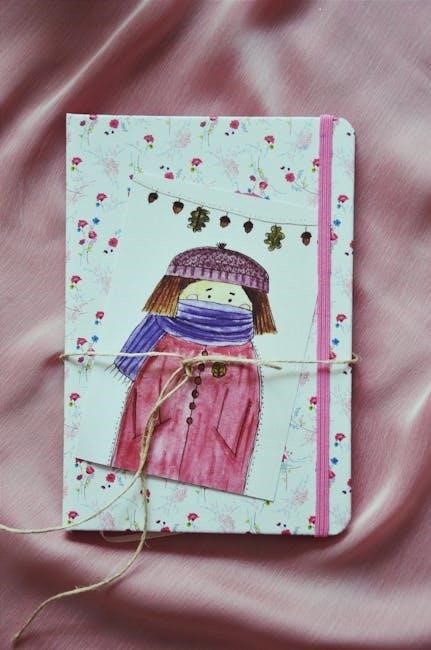
Troubleshooting Common Mistakes
Common mistakes include incorrect measurements and fabric choice. Ensure accurate sizing and test fabric texture to avoid misshapen ties; Double-check patterns before cutting for best results.
Fixing Uneven Knots
Uneven knots can be corrected by adjusting the bow tie’s length and ensuring symmetrical tying. Use a mirror to align both ends evenly and tighten gently to achieve balance. Practice makes perfect!
Adjusting the Bow Tie Size
Adjusting the bow tie size ensures a perfect fit around the collar. Measure your neck or use an existing tie to determine the ideal length. Use the adjustable strap or slider to customize the fit. For sewn bow ties, modify the pattern by adding or reducing length in the template. Ensure the bow sits comfortably under the collar without being too tight or loose. Proper sizing enhances both comfort and appearance, making the bow tie suitable for various occasions. Always test the fit before finalizing the design to achieve the desired look and ensure it stays securely in place.
Repairing Sewing Errors
Repairing sewing errors is essential for achieving a professional finish. If stitches are uneven or loose, carefully remove them using a seam ripper. Press the fabric to eliminate puckering or creases. For mismatched seams, realign the fabric and resew with precision. To fix frayed edges, apply a small amount of fabric glue or zigzag stitching. Regularly inspect your work as you go to catch mistakes early. Using quality tools and taking your time can help prevent errors. Remember, even small imperfections can be corrected with patience and attention to detail, ensuring your bow tie looks polished and well-crafted.
Making a bow tie using a free PDF pattern is a fun, creative project. With patience and practice, you can craft a stylish accessory that adds a personal touch to any outfit. Embrace experimentation and enjoy the satisfaction of wearing something you made yourself. Happy sewing!
Final Thoughts on Making a Bow Tie
Making a bow tie using a free PDF pattern is a rewarding and creative experience. It allows you to customize your accessory to match your personal style and outfit choices. With a free PDF pattern, you can explore different designs and fabrics without financial commitment. The process sharpens your sewing skills and fosters patience and attention to detail; Whether for a special occasion or everyday wear, a handmade bow tie adds a unique, personal touch. Embrace the journey of crafting your own bow tie and enjoy the satisfaction of wearing something you’ve lovingly created. It’s a small project with big style impact!
Encouragement to Experiment and Create
Embrace the freedom of using a free PDF bow tie pattern to explore your creativity. Experiment with vibrant fabrics, bold colors, and unique designs to craft a one-of-a-kind accessory. Don’t hesitate to try unconventional materials or modify patterns to reflect your personal style. Making bow ties is a fun and rewarding DIY project that allows you to express yourself. Remember, mistakes are part of the learning process and often lead to exciting new ideas. Take inspiration from online tutorials or crafting communities to refine your skills. With patience and practice, you’ll create stunning bow ties that stand out and tell your story. Start crafting today and enjoy the journey of bringing your imaginative designs to life!
